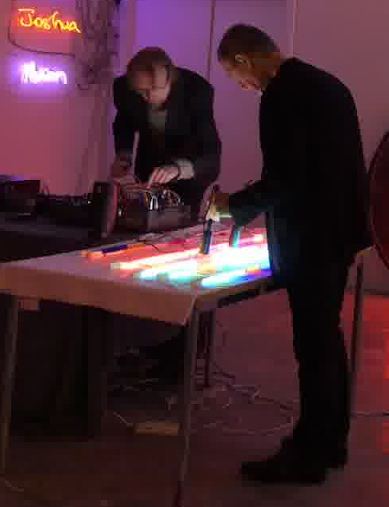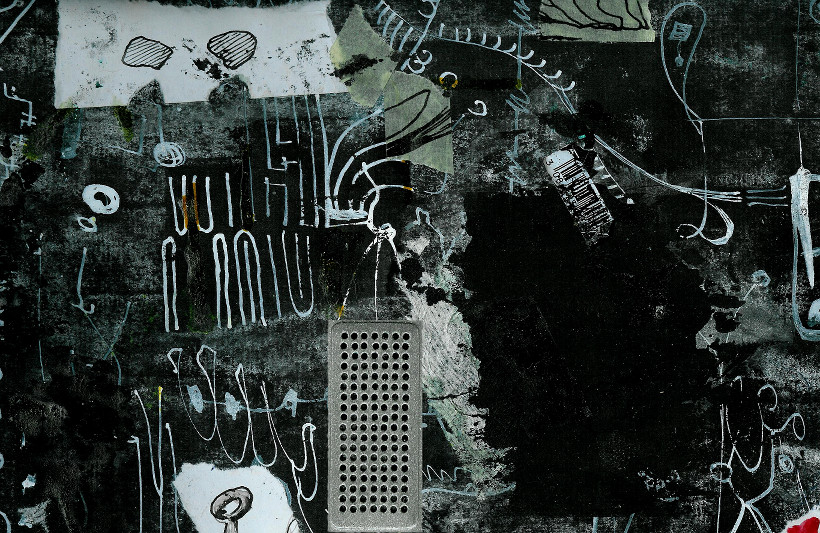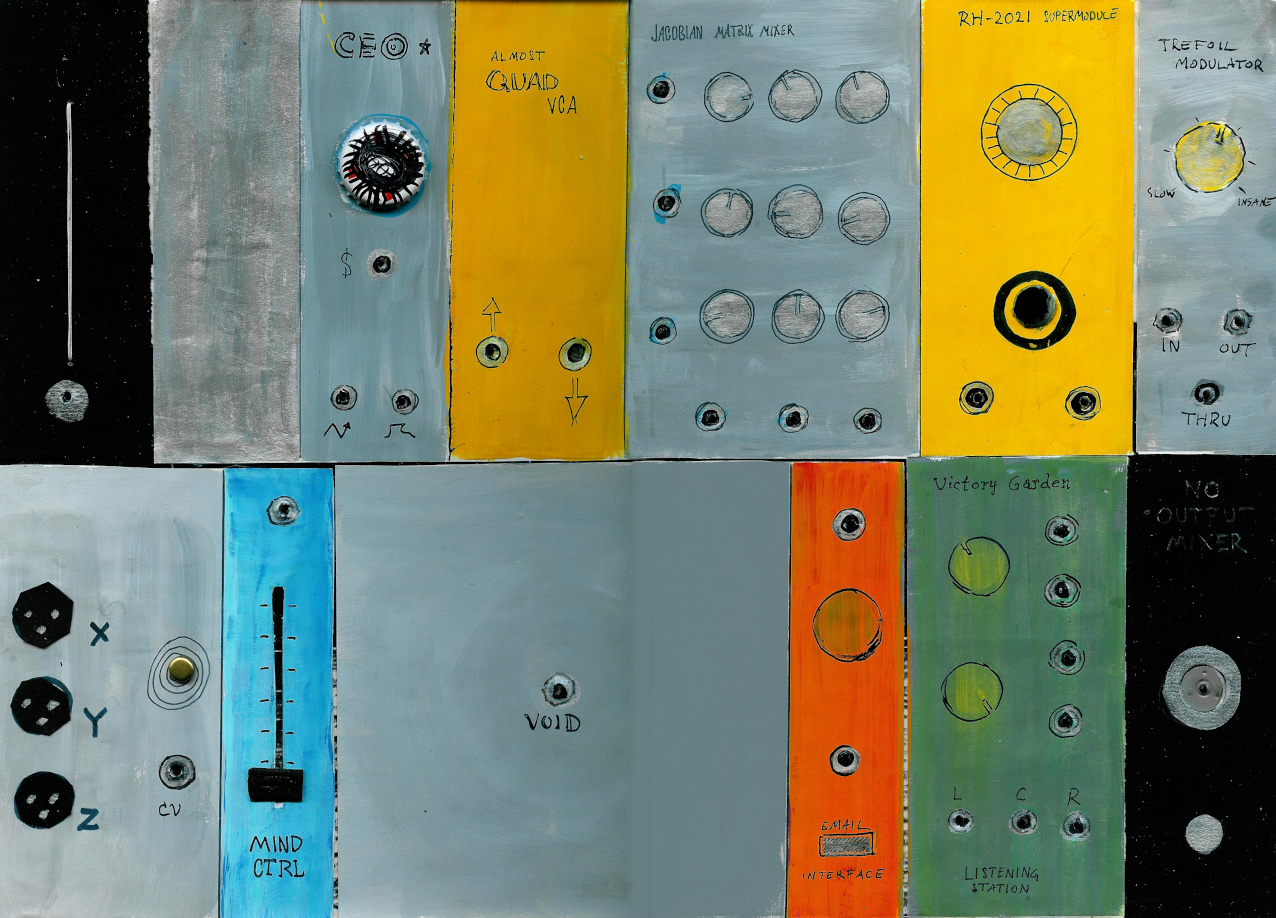Neon Meditations

From the premiere in 2018.
What would a collaboration between the visual and sonic arts be like if neither art form is to illustrate the other? This question imposed itself when Per Hess and I decided to begin a collaboration including his neon works and my music. We ended up treating the neon works as an integral part of an instrument.
In Neon Meditations colours are translated into sound using sensors made of photo resistors coated with colour filters. The sensor signals control various filters and oscillators in a modular synth in a rather complex patch. Adding to the complexity and confusion we both control the modular simultaneously. After weekly rehersals over an extended period, we premiered the work in October 2018.
The sound is distributed through four exciters placed on various objects, such as drums and shoe boxes, which contribute to the rattling, buzzing qualities.
All of this is detailed in the essay Neon Meditations in Theory and Practice published as a booklet (in Swedish), and only available if you catch one of our performances.
Neon Meditations
Recorded during sound check for a concert celebrating Notam's 25 years jubilee on November 23, 2019.
There are video excerpts from our first performance, Bærum Kunsthall in 2018
and from a later performance, at Kunstnernes Hus in 2020.
Albums made with modular
- Sozialrealismus (2015)
- Circular Golomb Rulers (2016)
Since it's much too easy to make music with a modular, there are hundreds of recordings in the archives waiting to attain the status of official works. Fortunately, that usually doesn't happen without some critical selection, editing and mixing, or even old-fashioned composing!
gå lett
This dance piece by Vivild Bergersen featured live electronic music performed on a modular, as well as a brief interlude of pre-recorded music. The modular was played using a ribbon controller, sensor strip, expression pedal, foot switches and a contact microphone used as a trigger device. Everything was manually controlled – except, of course, the things that were pedally controlled. No sequencers, backing tracks, or any other safety nets were used.
Although not notated other than in a most rudimentary fashion, the piece has a fixed form much in the same way as any piece in an aurally transmitted tradition. Since everything is actually performed in real-time, the music can be finely tuned to the choreography and follow variations in timing if necessary.
Self-generating patches
Loosely speaking, a self-generating patch is what you get when you patch up a modular and just let it run autonomously without external input or control. As such, self-generating patches are related to autonomous instruments and some other kinds of cybernetic, complex systems, auto-poietic or self-organising strategies of music making.
Typically, a self-generating patch involves feedback and sources of slow modulation. When using only analogue modules it may be conceived of as an "analogue computing" approach to algorithmic composition.
A self generating patch of some sort.
Interesting question: How can we represent patches concisely? Feedback networks will look
messy as graphs.
A possible solution can be seen below. For a more formal approach, one can use the notation known
as Patchbook,
or some variant of it.
Radio + Modular

AM radio and modular. It's important to keep up with the news even when recording an improvised session. Recorded on November 19, 2015.
Max Headroom à Paris #1.
Max Headroom à Paris #2
Max Headroom à Paris #3
Live improvisation
Recorded at Biermannsgården on 29 october 2015.
This track can be found elsewhere.
The patch is as documented as they ever get.
The Incomplete Csound Manual
While Csound has become a feature-rich sound synthesis language, its expanding capabilities also makes it harder to learn. This is a short introduction to a useful subset of Csound.
Demonstration of frequency shifting
Intended as a demo of a frequency shifter module, it turned into a general tutorial of single side-band modulation. It grew out of proportion and can be found on its own page.
Synchronization of chaotic modules
Another outgrown demonstration of a module along with some dynamic systems theory.
Variants of FM
A deeper look into some less well known aspects of feedback FM, exponential FM and a few other variants.
Nonlinear Oscillators
Mostly about chaotic and nonlinear oscillators, and a continuation on the FM theme.

Further listening: FASM radio streams nothing but music made with modular synthesizers.
© Risto Holopainen
